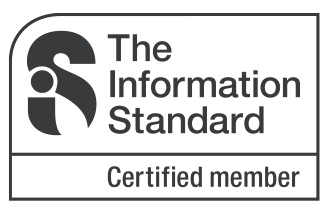 brainstrust’s commitment to excellent patient information has been granted an official stamp of approval by the Department of Health, which has awarded the charity with the Information Standard.
brainstrust’s commitment to excellent patient information has been granted an official stamp of approval by the Department of Health, which has awarded the charity with the Information Standard.
The purpose of this DoH sponsored scheme is to give members of the public an easy way to identify trustworthy health information on the Internet or in print. An important thing when you read research that says:
- 71% of people would trust a website or a leaflet more if there was a quality mark on the information certifying it as trustworthy and reliable.1
- 3 out of 4 people find it hard to know which health and social care information to trust.2
The Information Standard mark signposts trustworthy information, so the public can find it quickly and easily. We like that!
1 Capita Group Research/Research Now Survey 2010
2 Department of Health TNS Omnibus Survey, 2007
Top 1%?
With over 170,000 charities in the UK alone, brainstrust joins an elite band of just 126 to hold Information Standard accreditation. Or, the top 1%, we are also the first brain tumour charity in the UK with this mark of high quality information, and sit in illustrious company alongside the likes of Macmillan, the RNIB and Epilepsy Action.
Tightly controlled information
Our assessor, who conducted a rigorous two-day evaluation checking all aspects of brainstrust‘s information said, “brainstrust is a small charity inspired by the experiences of the founders when a family member was diagnosed with a brain tumour. It has grown to be a national information resource for patients similarly diagnosed, and their carers, as well as funding, not so much research itself, but better ways of collating and sharing the research results, as well as sharing the experience of patients and carers. The production of patient information, which is central to the purpose of the charity, is tightly controlled, and draws upon the brainstrust panel of patients. carers, clinicians and specialist nurses.
The application was well-evidenced, and was reinforced by discussions the evaluator had with staff, trustees, their designer, a clinician and a specialist nurse. There is no doubt that the charity is committed to the Information Standard, has a realistic interpretation of its requirements, and has already demonstrated its ability to produce information to meet IS requirements.”
The Nurse view: “Immediate access to trustworthy evidence based information”
Ingela Oberg, a specialist nurse at Cambridge University Hospitals Foundation Trust, finished with, “As a neuro oncology specialist nurse I am delighted to know that a UK brain tumour charity has achieved the highest standard of information accreditation. For the patients it means they have immediate access to trustworthy, evidence based information which is not only informative, but also concise as well as regularly updated. It means a lot to us as specialist nurses up and down the country knowing that we can signpost our patients and their families and carers to such a site, knowing they do not need to filter through any un-vetted online information that may cause them undue stress and anxiety! Well done to brainstrust and keep up the good work!”
Great news for brainstrust’s brain tumour patients and their carers
Back at the ranch, our Trustees are delighted, and Will Jones, brainstrust’s Development Director reckons “This is great news, for a number of reasons – this will give our supporters confidence that the work we are doing is up-to-date and accurate. Secondly, and most importantly, the patients, carers and healthcare professionals who use our information can be confident that what we have to say is relevant, evidence based, authoritative, complete, secure, well-designed, readable and accessible.”
More information
To find out more about the Information Standard, visit www.theinformationstandard.org
To learn more about brainstrust’s information, visit www.brainstrust.org.uk/advice.php or call us now on 01983 292405



